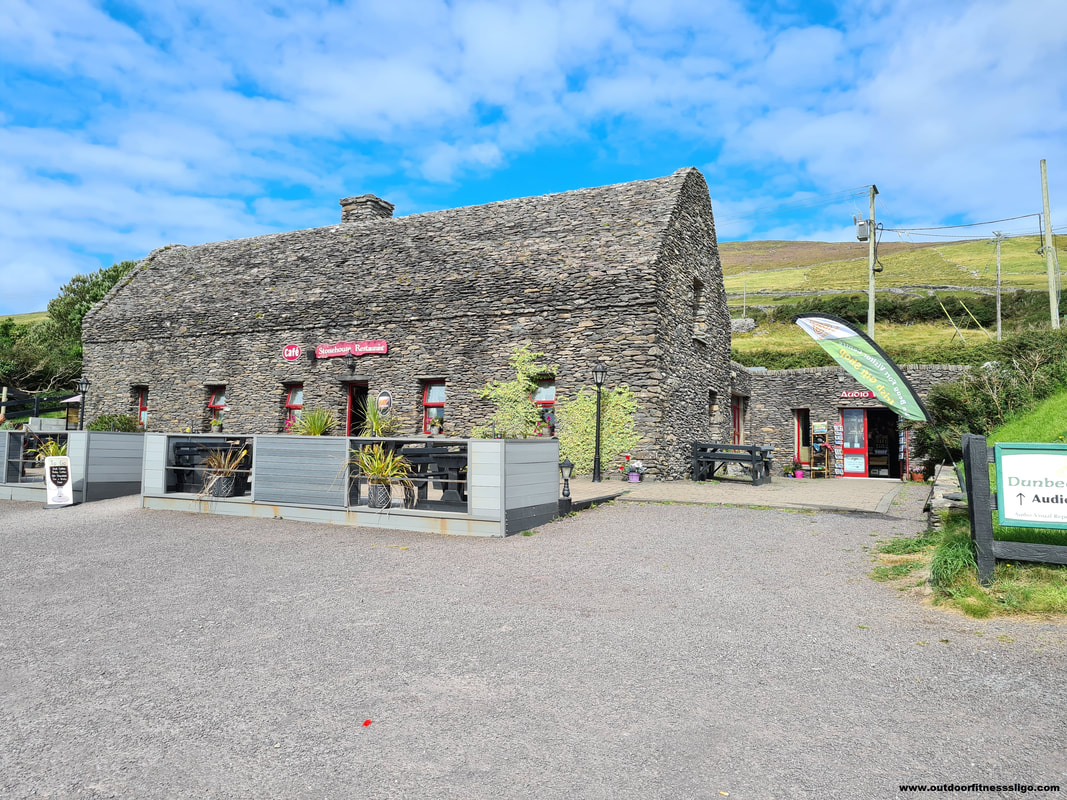|
On an sunny day, we decided to visit Dun Beag Fort on the Dingle peninsula. (http://dunbeagfort.com. The fort is dramatically set on a sheer cliff overlooking Dingle Bay. This promontory fort dates to 580BC and is one of the few remaining in Ireland. In County Sligo where we live, we have a few promontory forts (www.choosesligo.com/promontory-forts.html) as well , each of them balancing on the edge of a cliff surrounded by the Atlantic. When we arrived at Dun Beag fort, we bought our tickets at the small ticket office and crossed the street to the tourist shop / restaurant where we first watched a short audio-visual presentation that explained the history of the fort and what life was like for people living on the peninsula during this time. The restaurant / tourist shop deserves a noteworthy mention as well. It has a one-of-a-kind stone roof, blending it into the rugged landscape of the Dingle peninsula. A short walk towards the coastline brought us to the fort where we admired Dingle Bay. Excavations within the fort have shown that the fort was primarily occupied between the 8th and 11th Centuries AD, when it was defended by a series of ditches and earthen banks. Within those earthen banks was a substantial stone wall with on the inside steps allowing soldiers to defend the fort during an attack.
The interior of the fort contains the remains of a large stone-built beehive as well as a souterrain. It is believed that the fort was home to a local noble who ruled the surrounding villages. With the cliff edge slowly falling into the Atlantic due to erosion, the fort is getting closer and closer to the cliff edge. Hence for safety reasons, a large part of the fort can not be entered.
0 Comments
Leave a Reply. |
�
About the AuthorWe are Peter & Dolores De Bie. We love the great outdoors, discovering new parts of the world and writing about our adventures along the Wild Atlantic Way and further afield Categories
All
|
Contact us |
Where are our visitors from |
copyright © 2024 www.outdoorfitnesssligo.com
©Website design by Outdoor Fitness Sligo
©Website design by Outdoor Fitness Sligo






 RSS Feed
RSS Feed
